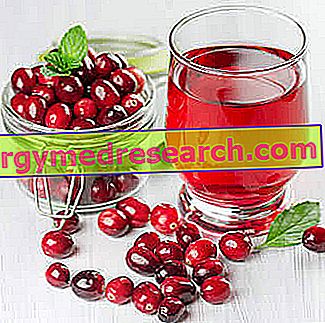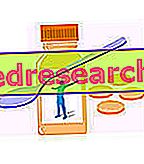Cystitis
Cystitis is an inflammation of the bladder, usually due to an infection. It constitutes one of the most frequent diseases of the urinary tract and mainly affects the female sex.

The only pathological complication of cystitis is renal infection, fortunately very rare.
After the first diagnoses, some women choose to treat cystitis themselves. The doctor's intervention is essential especially when:
- Blood and / or pus appear in the urine
- For pregnant women
- For children
- For the men.
The causes of cystitis properly so called are not always well defined.
The pathological mechanism is based on the ascent of bacteria (cutaneous or more commonly fecal) into the urethra up to the bladder (an event favored by the use of the catheter, by poor hygiene, etc.).
The resolving cure consists of antibiotic and anti-inflammatory drugs.
There is also an alternative form of cystitis, different from the common one, known as interstitial cystitis.
Interstitial cystitis
The interstitial is a form of cystitis that is NOT evident (without clinical signs) and resistant to drugs; it mainly affects middle-aged women and should be treated differently than bacterial cystitis.
The etiological cause is almost always unknown and many suspect that it could be:
- Irritation due to food
- A psychosomatic reaction.
Prevention and Diet
The prevention of INFECTIOUS cystitis involves a series of well-defined behavioral and nutritional measures.
The behavioral ones concern the care of the intimate hygiene, the attention in the emptying of the bladder and the exclusion of some risky circumstances.
Dietary tactics include:
- Maintain hydration and increase daily urination, both in frequency and in volume
- Consume foods that could promote the remission of cystitis; a fairly well-known product is American cranberry (crambery) juice
- According to some, the reduction of urinary pH (See in-depth: Acidifying the Urine).
In the case of INTERSTIAL cystitis, the most important precautions to be respected are:
- Follow a varied and balanced diet
- Carry out an exclusion diet, with the support of a food diary on which to note the dietary and behavioral variations.
Balanced diet for cystitis
The diet for interstitial cystitis (however valid also for the bacterial one), must have all the characteristics of nutritional balance.
These aspects can be summarized as follows:
- Calories that allow weight to be maintained or, in case of severe overweight, to lose weight slowly. "Slowness" in weight loss means a weight loss of 3kg or less per month. This can be achieved by cutting the diet by 650-700kcal per day
- Break down the food of the day into 5 meals: a satisfying breakfast, at least two snacks, a structured lunch and a light dinner
- Eliminate junk foods, unhealthy foods and products processed / stored in jars: sweet, savory, fast-food, fried, pre-cooked, in oil, pickled, smoked, salted, sausage, fatty meat cuts (ribs, coppa, bacon) etc.), canned meat and fish, ready-made sauces, sweets, sweets etc.
- Replace all refined foods with the equivalent NOT processed. For example, instead of a portion of semolina pasta with meat sauce, prefer a soup in wholewheat broth and a small dish of meat
- Consume all foods belonging to the basic food groups with a consumption frequency equal or comparable to the following:
- fruit two or three times a day,
- vegetables two or three times a day (at least one raw),
- milk once a day, natural yogurt once or twice a day,
- cereals or legumes for pasta dishes once a day *, bread only if necessary (eg a piece to clean the dish),
- a teaspoon of raw oil on each plate,
- meat twice a week *,
- fish two or three times a week *,
- three eggs a week,
- cheese as a dish once or twice a week * (grated on the pasta every day, one or two teaspoons)
* The frequency of consumption of these foods considers the use of a large portion that, if necessary, can also be divided into two smaller ones to be distributed on the same day.
- Consume a portion of marsh cranberries or, if not available, their juice in a jar. Some argue that (thanks to some molecules they contain) they can help fight BACTERIAL cystitis; however, scientific research has not yet confirmed this hypothesis
- Remove added sugar, sweeteners and salt
- Replace any form of dressing grease with cold-pressed oils (eg extra virgin olive oil)
- In some cases, it is useful to remove certain stinging spices and the stock cube
- Eliminate alcohol and excess coffee, as well as all packaged beverages (cola, orange juice, etc.), preferring some natural herbal tea
- Drink at least one glass of water per meal (one glass contains 150ml); there are 5 meals in total, for a total of 600ml / day. With food, an average of about 0.8-1.0 ml of water will be supplied to each calorie. Assuming a 1, 900kcal diet, about 1, 500-1, 900ml can be reached, for a total of 2, 100-2, 500ml (more than enough).
- Check for gluten and lactose intolerances; in the case, eliminate them from the diet. Gluten is typical of some cereals (and derivatives) such as: wheat, spelled, spelled, rye, oats, barley and sorghum. Lactose is typical of milk and non-seasoned derivatives.
Celiac disease is often linked to other forms of inflammatory or autoimmune discomfort; lactose intolerance, on the other hand, causes an intestinal imbalance that can radiate pain or discomfort in other areas (for example, from the abdomen to the pelvis)
- With the help of your doctor, try to exclude or replace certain drugs or supplements that could irritate the bladder.
Diet and interstitial cystitis
Interstitial food and cystitis
There is a list of recommended foods not recommended in the diet for INTERSTIAL cystitis (based on the pH, the content of irritating molecules, etc.).
This list is mainly based on conjectures or experiences that, at the moment, do not have a statistical value.
However, as a matter of disclosure, we will report them below, emphasizing that they do not necessarily constitute a cure for interstitial cystitis:
| RECOMMENDED FOODS | FOODS NOT RECOMMENDED |
| FRUITS | |
| Bananas, marsh cranberries, melons, watermelon, grapes, gala apples, Fuji and Pink Lady, pumpkin and pears | Grapefruit, lemons, oranges, pineapples, kiwi, Granny Smith apples and nectarines, sour blueberries, sour grapes and sour cherries |
| VEGETABLES and LEGUMES | |
| Potatoes, sweet potatoes, beans, peppers, broccoli, carrots, asparagus, cauliflower, celery, lettuce, mushrooms, peas, radishes, pumpkin and zucchini | Onions, chillies, pickles, sauerkraut, tomato derivatives, soy flour, edamame and toasted soy |
| MILK and DERIVATIVES | |
| Milk, milk flakes, mozzarella, cheddar, feta, ricotta | Yogurt (taste of lemon, lime, orange, chocolate, mocha or artificial sugars) spicy or very mature cheeses and chocolate ice cream |
| CEREALS, TUBERS and DERIVATIVES | |
| Wheat, rice, pasta, corn, quinoa, oats, buckwheat, unleavened bread, polenta, puree, cous cous, millet, spelled and bread (except those listed next) | Highly processed or fortified bread and pasta, sweetened, flavored cereals added with cocoa (eg sweets and breakfast cereals) |
| MEAT and FISHERY PRODUCTS | |
| Chicken, turkey, beef, pork, lamb, prawns, tuna and salmon | Seasoned, canned, processed, processed meat or fish cuts pre-packaged, smoked. Strongly spiced, salted and flavored salami |
| OIL SEEDS and OILS | |
| Almonds, cashews, peanuts and their oils | Hazelnuts, pecans and pistachios |
| DRINKS | |
| Water, whole milk, partially or skimmed milk; rice, coconut and almond milk; cranberry and pear juice; chamomile and peppermint teas | Alcoholic beverages (including beer and wine), carbonated beverages such as soda, coffee and tea, citrus juices (grapefruit, orange), other acid juices, liquid chocolate, coffee and smoothies that contain foods not recommended |
| DRESSING | |
| Garlic | Ketchup, spicy mustard, miso, soy sauce, vinegar, cayenne pepper, spicy curry powder, horseradish and spicy sauces |
| ADDITIVES | |
| All advised against; in particular monosodium glutamate (MSG), aspartame, saccharin and dyes | |
Interstitial Diary and Cystitis
As anticipated, in the search for the triggering factor for interstitial cystitis it can be very useful to compile a food diary.
The compilation must not be limited to ONLY note the foods consumed, but must also take into consideration: sports, work, any particular or stressful situations and the moment of onset of symptoms.
The most correct system would be to start the diet for cystitis with a so-called "elementary" therapy, gradually adding, one at a time, all food and beverages (leaving 7 days between one and the other). In this way it is possible to identify the product responsible for the symptomatology.
Another system is the reverse one. In the presence of symptoms, starting from a customary diet, all "forbidden" foods will be progressively excluded (one at a time, with 7 days between one and the other).
The diet diary of the cystitis diet can be used both on a personal level and as a consultation tool for the primary care physician or the treating urologist.



